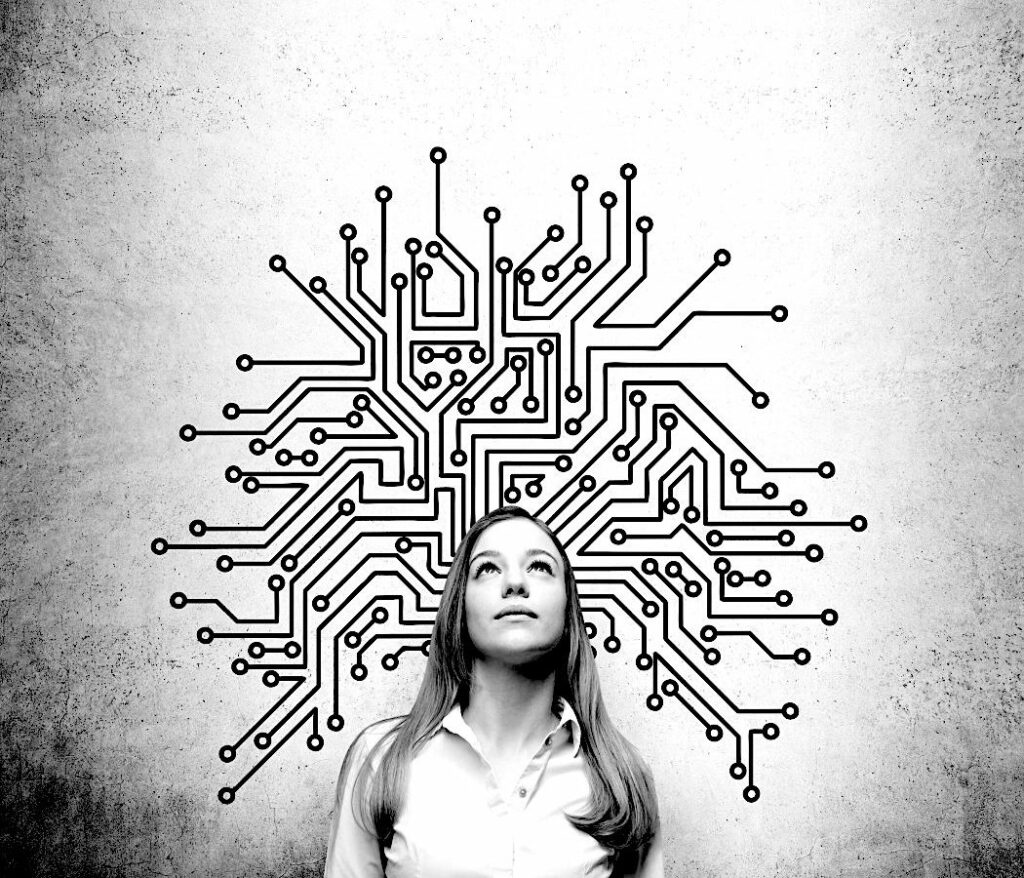Coding IS the language of women. Programming WAS invented by a woman. What I wish every technology engineer and dev knew about women in technology.
Since the 1980’s we have created generations of people who want to be the next Bill Gates, Steve Jobs, or Mark Zuckerberg. Generations across the technology sector falsely think women can’t and don’t code and if they do, they do so poorly.
We have NOT created generations who want to be the next Ada Lovelace, Grace Hopper, or Katherine Johnson. These are three women who preceded Gates, Jobs, and Zuckerberg in impacting the language, design, and architecture of the technology we use every day. These women were exceptional engineers, designers, scientists, coders, developers, and artists who led their fields. It was Ada Lovelace who wrote the FIRST computer program, ever.

Coding IS the work of women
Today, we wouldn’t have computer programs like we do, if it wasn’t for Ada Lovelace. The language many programs are based on wouldn’t be as close to English rather machine-language if it wasn’t for Grace Hopper. And NASA would have taken longer and with less precision to get to the moon if it wasn’t for the work of Katherine Johnson.
The poor awareness in our society of the impact of women in computing programming has much to do with how we think and educate about coding as hard “science and technology work” ~ as STEM. It also has to do with how we socialize coding as more the work of men than women and as largely anti-social as a male trait, according to computing historian Nathan Ensmenger. This socialization started with marketing campaigns in the 1980s targeted at men interested in computer gaming. That is despite its origins in the mind of a woman centuries earlier in the 1840s

We’ve come to believe that technology is only the work of men
For generations, male and masculine gender stereotypes have been embedded in advertisements about technology, in how educational programs are designed, and in the hiring practices of coders and developers. Even the academic research work on technology development and use is led and authored by mostly male technology and business academia. All this has had a profound effect on masculinizing coding from being the domain of ‘computer girls’ to ‘computer geeks’ and the profession of computer programming being overwhelming male.
We have created an entire sector and workplace that is not gender equal in composition, culture, or gender neutral in the products and learning programs they deliver. Not having gender equity in the workplace creates a more masculine computer culture. It also creates discourse and hidden gender bias in the development cycle of most technologies, and the language used in the workplace around them.
This has impacted the prioritization of coding as a hard technical science or skill over the softer skills of storytelling, design, and creativity and the social issues we often design for.
Coding IS an art form
Not all is lost. There is the possibility to recreate this. A way that reframes coding as equally the work of women as well as men; as the work of people drawing on both the soft and hard skills of men and women, as well as masculine to feminine ways, equally.
The way to do this is to embrace coding with the mindset in which it was developed at its origins, as an art form. To talk about the writing of code and the development of digital experiences as an art form in the craft of language; a language that draws on multiple literacies from multiple disciplines to create multiple narratives in hypermedia form.
It is a language that combines creating with numbers, symbols, and the written word, as well as with images, audio, and video content. A language that in its logic is embedded in storytelling and the social design of our world. A language that is creative and social as much as it is technical and analytical. A language that embraces the mindset in which it was created as a ‘poetic science’.

Coding IS a poetical science
The first computer program is generally dated to 1843 when Ada Lovelace wrote and published an algorithm to calculate a sequence of Bernoulli numbers. It was intended to be carried out by the Analytical Engine (The First Computer) that was invented by Charles Babbage. As a result of her work Ada Lovelace is regarded as the first computer programmer or coder, ever.
The impact of her work laid the foundation for Gates, Jobs, and Zuckerberg amongst others to do their work. She was an English mathematician and also a writer. Her interest in mathematics and logic and her education were influenced by both scientists as well as writers such as author Charles Dickens. Much of this influence came from her mother, Lady Byron, with the reputation of being a fine mathematician, and her father, Lord Byron, a famous poet.
Fearing Lovelace would follow in her father’s footsteps, Lady Byron immersed her daughter in mathematics. Lady Byron, herself a mathematical wiz called “Princess of Parallelograms” by Lord Byron, believed a rigorous course of study rooted in logic and reason would enable her daughter to avoid the romantic ideals and moody nature of her father. From the age of 4, Lovelace was tutored in mathematics and science, an unusual course of study for a woman in 19th-century England
Ada was a visionary who predicted that computers could do more than just crunch numbers. She foresaw the multi-purpose functionality of the modern computer and referred to her work as ‘poetical science.’ In describing her approach as ‘poetical science,’ Ada drew on linking the beauty of “engineering and humanity to technology” as well as “poetry to processors” (an idea often falsely attributed to Steve Jobs). Ada developed a vision of the capability of computers to go beyond mere calculating or number-crunching, a vision that valued imagination, intuition, and metaphysics as much as it did mathematics as tools to explore “the unseen worlds around us.”

Embracing Ada’s Social Vision
Ada’s mindset of poetical science led her to ask questions about the Analytical Engine that neither Babbage nor his predecessors did. She adopted more of a social vision that examined how individuals and society relate to technology as a collaborative tool, not just as a mathematical or scientific engine. She married the social and creative with the scientific and technical and in doing so, she created the first algorithm intended to be carried out by such a machine. Her work at the origins of computer programming, a field of work largely regarded as the work of men, was actually invented by a woman and developed by thousands of women after her.
It is in this reframing of coding and computer engineering as it was at its origins ~ as a poetical scientific language we live and work in, and as a social art form that we use to create the world around us ~ that we can embrace coding as the work of women and men, equally. As a language of people.
By talking about coding as a human language:
- We can then begin to step beyond the hidden gender biases, the masculinization of technology workplaces, technology marketing, and the products they produce.
- We can then start to impact the results of multiple studies of women in computing that report that women under-evaluate their abilities in technology, yet overperform, often outperforming men in the quality of their technology work product.
- We can then position technology learning programs in schools and colleges as truly interdisciplinary, not just STEM-based, and as representing all gendered identities.
If we do not recreate the narrative we risk continuing to exclude over 50% of the world’s population, girls, and women from job opportunities, and being exposed to hostile work environments. We also risk a more worrying trend: A decline in the societal influence of women in the design of our world.
Coding WAS invented by a woman.
As evidenced by the work of great women such as Ada Lovelace, Grace Hopper, and Katherine Johnson and thousands of women who work in and with technology ~ a woman invented computer programming, women make some of the best developers and engineers, and women lead technology businesses every single day.
Women SLAY in technology. It is only people who don’t know their history who think otherwise.
